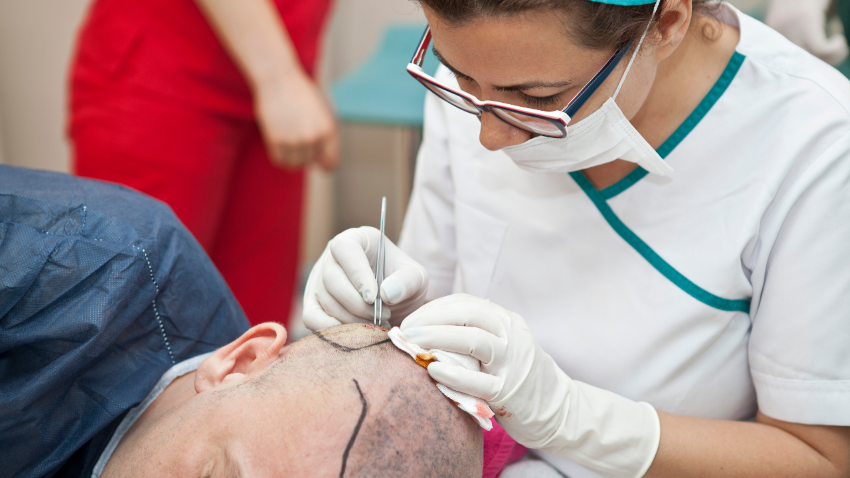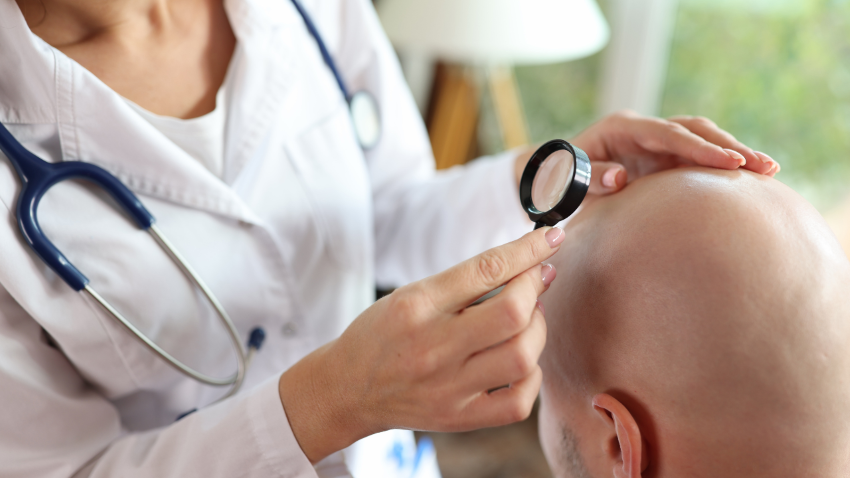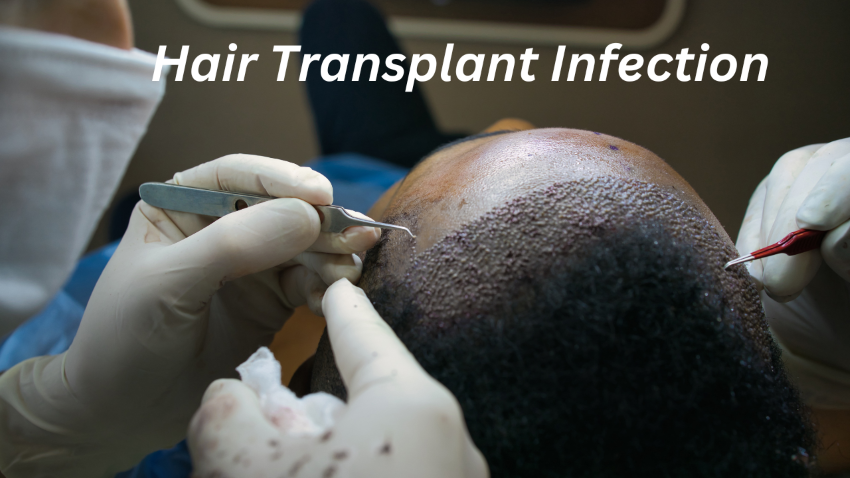Have you ever considered the potential dangers of a hair transplant infection? Although it’s a popular cosmetic surgery for correcting thinning hair and restoring hairlines, some possible risks are involved, with infection being a major one. This manual tries to clarify the risk factors, preventative measures, and fundamental information needed to identify and treat a hair transplant infection.
Understanding these elements is essential for making well-informed decisions and providing for yourself after surgery, whether thinking about getting a hair transplant or just curious about the operation.
What Is a Hair Transplant Infection?
The possibility of bacterial or fungal infections following the completion of a hair transplant process raises the major risk of a hair transplant infection. Both the donor and recipient regions of the scalp of the scalp can be impacted by these illnesses.
It is crucial for people considering hair transplant surgery or recovering from hair transplant surgery to be aware of the risk factors, preventive measures, and potential signs that require immediate attention because, when left untreated, they can lead to complications that seriously jeopardize the overall success of the transplant.
Contributing Factors

Hair Transplant Infection for Poor Hygiene
Practicing good cleanliness before and after the procedure is crucial to avoid infections. Lack of cleanliness on the scalp might allow bacteria to grow and raise the possibility of infection.
Poor Postoperative Care
You must carefully adhere to your surgeon’s postoperative care instructions. You risk getting an infection around the transplant site by not following these instructions—for example, not properly washing your hands after touching your scalp.
Immunodeficiency
People with compromised immune systems are more likely to experience infections after hair transplants, regardless of whether a medical condition or medication brings this on.
Discreet Facilities
It’s important to pick a reputable, licensed clinic with a sanitary setting. Infections may develop if the surgical equipment or setting is not sufficiently sterilized.
Recognizing the Signs of Infection
It’s essential to be vigilant and watch for signs of infection after a hair transplant. Common symptoms include:
Redness and Swelling
Early signs of an infection after a hair transplant can include redness and swelling. It’s crucial to keep a close eye on the transplant region if it becomes red and irritated because this could mean an infection is present.
Pain or Discomfort
Ongoing pain or discomfort at the transplant site, especially if it worsens over time, could be a worrying symptom of an infection. Any inexplicable or escalating distress must be treated by a doctor immediately.
Pus or Drainage
The appearance of pus, discharge, or an offensive odor near the transplant site is unmistakable proof of infection. Awareness of these symptoms is crucial because they call for an urgent medical response.
Fever
In the days after surgery, the emergence of a fever might be a worrying symptom, denoting a systemic infection. A postoperative fever should be promptly diagnosed and treated by a healthcare provider; it is not advised to ignore one.
Ensuring a Safe Post-Transplant Experience

Prevention is key when it comes to avoiding hair transplant infections. Here are some essential steps to minimize your risk:
Choose a Qualified Surgeon
Selecting the best surgeon is crucial. Choose a board-certified, seasoned specialist operating in a spotlessly hygienic environment. Prioritize comprehensive research, which includes examining their credentials and examining client testimonials.
Follow Postoperative Instructions: Hair Transplant Infection

Follow your surgeon’s postoperative care recommendations to the letter. This covers appropriate hygiene, medicine, and avoiding pursuits that can spread pathogens.
Keep up Good Hygiene
Make sure your scalp and hair are clean before the procedure. Utilize the suggested cleansing procedure and stay away from any products that can irritate your scalp.
Avoid Risky Behaviors: Hair Transplant Infection
Avoid touching the transplanted region with dirty hands, scratching it, or exposing it to too much perspiration, dust, or sunlight while healing. These safety measures are necessary for a complete recovery.
Monitor for Signs of Infection
Avoid touching the transplanted region with dirty hands, scratching it, or exposing it to too much perspiration, dust, or sunlight while healing. These safety measures are necessary for a complete recovery.
Treatment of Hair Transplant Infections

Understanding the warning indications of a potential hair transplant infection is crucial, and prompt medical intervention is essential for a full recovery. Quick intervention is crucial if you suspect an infection. Depending on the infection you may have acquired, your surgeon may typically recommend antibiotics or antifungal drugs.
Your medical team may decide that drainage techniques or even revision surgery are required in more severe cases if there has been a considerable buildup of pus or the infection has proven difficult to treat. Your transplant’s integrity and general health are more likely to be preserved with early management.
Conclusion
Still, the peril of infection must be considered before witnessing a hair transplant. You may reduce the threat and ameliorate your chances of a successful procedure by picking a trained surgeon, clinging to correct hygiene and aftercare guidelines, and checking for infection suggestions. The flashback that prompts opinion and treatment is pivotal if you suspect a hair transplant infection. When witnessing any medical treatment, put your health and well-being first.
FAQs:
Q. How frequent are infections after hair transplants?
- When sufficient measures and treatment are taken, transplant infections are relatively uncommon, occurring in less than 1% of instances.
Q. Can diseases be avoided entirely?
- While it can be difficult to obliterate the risk, good hygiene practices and postoperative care guidelines can greatly lower the likelihood of infection.
Q. How soon may an infection start after surgery?
- After surgery, infections can develop within the first few days to a couple of weeks, so it’s important to be vigilant during the first healing process.
Q. After having a transplant, can I continue taking care of my hair as usual?
- It’s crucial to adhere to your surgeon’s recommendations for hair maintenance after a transplant. In most cases, you’ll need to change your routine to prevent the grafts from being harmed or contaminated.
Q. Is it safe to undergo a hair transplant if I have a compromised immune system?
- Immune-compromised patients should carefully weigh the risks and advantages in consultation with their doctor and the transplant surgeon. Additional safety measures may be required.

